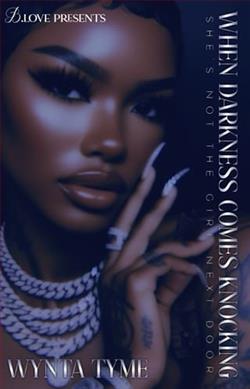Page 2 of Macbeth
Books About Shakespeare's Life The following books provide scholarly, documented accounts of Shakespeare's life: G. E. Bentley, Shakespeare: A Biographical Handbook (1961); E. K. Chambers, William Shakespeare: A Study of Facts and Problems, 2 vols. (1930); S. Schoenbaum, William Shakespeare: A CompactDocumentary Life (1977); and Shakespeare's Lives, 2nd ed. (1991), by the same author. Many scholarly editions of Shakespeare's complete works print brief compilations of essential dates and events. References to Shakespeare's works up to 1700 are collected in C. M. Ingleby et al., The Shakespeare Allusion-Book, rev. ed., 2 vols. (1932).
The Texts of Shakespeare
AS FAR AS WE KNOW, only one manuscript conceivably in Shakespeare's own hand may (and even this is much disputed) exist: a few pages of a play called Sir Thomas More, which apparently was never performed. What we do have, as later readers, performers, scholars, students, are printed texts. The earliest of these survive in two forms: quartos and folios. Quartos (from the Latin for "four") are small books, printed on sheets of paper that were then folded in fours, to make eight double-sided pages. When these were bound together, the result was a squarish, eminently portable volume that sold for the relatively small sum of sixpence (translating in modern terms to about $5.00). In folios, on the other hand, the sheets are folded only once, in half, producing large, impressive volumes taller than they are wide. This was the format for important works of philosophy, science, theology, and literature (the major precedent for a folio Shakespeare was Ben Jonson's Works, 1616). The decision to print the works of a popular playwright in folio is an indication of how far up on the social scale the theatrical profession had come during Shakespeare's lifetime. The Shakespeare folio was an expensive book, selling for between fifteen and eighteen shillings, depending on the binding (in modern terms, from about $150 to $180). Twenty Shakespeare plays of the thirty-seven that survive first appeared in quarto, seventeen of which appeared during Shakespeare's lifetime; the rest of the plays are found only in folio.
The First Folio was published in 1623, seven years after Shakespeare's death, and was authorized by his fellow actors, the co-owners of the King's Men. This publication was certainly a mark of the company's enormous respect for Shakespeare; but it was also a way of turning the old plays, most of which were no longer current in the playhouse, into ready money (the folio includes only Shakespeare's plays, not his sonnets or other nondramatic verse). Whatever the motives behind the publication of the folio, the texts it preserves constitute the basis for almost all later editions of the playwright's works. The texts, however, differ from those of the earlier quartos, sometimes in minor respects but often significantly-most strikingly in the two texts of King Lear, but also in important ways in Hamlet, Othello, and Troilus and Cressida. (The variants are recorded in the textual notes to each play in the new Pelican series.) The differences in these texts represent, in a sense, the essence of theater: the texts of plays were initially not intended for publication. They were scripts, designed for the actors to perform-the principal life of the play at this period was in performance. And it follows that in Shakespeare's theater the playwright typically had no say either in how his play was performed or in the disposition of his text-he was an employee of the company. The authoritative figures in the theatrical enterprise were the shareholders in the company, who were for the most part the major actors. They decided what plays were to be done; they hired the playwright and often gave him an outline of the play they wanted him to write. Often, too, the play was a collaboration: the company would retain a group of writers, and parcel out
the scenes among them. The resulting script was then the property of the company, and the actors would revise it as they saw fit during the course of putting it on stage. The resulting text belonged to the company. The playwright had no rights in it once he had been paid. (This system survives largely intact in the movie industry, and most of the playwrights of Shakespeare's time were as anonymous as most screenwriters are today.) The script could also, of course, continue to change as the tastes of audiences and the requirements of the actors changed. Many-perhaps most-plays were revised when they were reintroduced after any substantial absence from the repertory, or when they were performed by a company different from the one that originally commissioned the play.
Shakespeare was an exceptional figure in this world because he was not only a shareholder and actor in his company, but also its leading playwright-he was literally his own boss. He had, moreover, little interest in the publication of his plays, and even those that appeared during his lifetime with the authorization of the company show no signs of any editorial concern on the part of the author. Theater was, for Shakespeare, a fluid and supremely responsive medium-the very opposite of the great classic canonical text that has embodied his works since 1623.
The very fluidity of the original texts, however, has meant that Shakespeare has always had to be edited. Here is an example of how problematic the editorial project inevitably is, a passage from the most famous speech in Romeo and Juliet, Juliet's balcony soliloquy beginning "O Romeo, Romeo, wherefore art thou Romeo?" Since the eighteenth century, the standard modern text has read,
What's Montague? It is nor hand, nor foot, Nor arm, nor face, nor any other part
Belonging to a man. O be some other name!
What's in a name? That which we call a rose By any other name would smell as sweet.
(II.2.40-44)
Editors have three early texts of this play to work from, two quarto texts and the folio. Here is how the First Quarto (1597) reads:
Whats Mountaque? It is nor hand nor foote, Nor arme, nor face, nor any other part.
Whats in a name? That which we call a Rose, By any other name world smell as sweet:
Here is the Second Quarto (1599):
Whats Mountaque? it is nor hand nor foote, Nor arme nor face, o be some other name Belonging to a man.
Whats in a name that which we call a rose, By any other word would smell as sweete,
And here is the First Folio (1623):
What's Mountaque? it is nor hand nor foote, Nor arme, nor face, O be some other name Belonging to a man.
What? in a names that which we call a Rose, By any other word would smell as sweete,
There is in fact no early text that reads as our modern text does-and this is the most famous speech in the play. Instead, we have three quite different texts, all of which are clearly some version of the same speech, but none of which seems to us a final or satisfactory version. The transcendently beautiful passage in modern editions is an editorial invention: editors have succeeded in conflating and revising the three versions into something we recognize as great poetry. Is this what Shakespeare "really" wrote? Who can say? What we can say is that Shakespeare always had performance, not a book, in mind.
Books About the Shakespeare Texts The standard study of the printing history of the First Folio is W. W. Greg, The Shakespeare First Folio (1955). J. K. Walton, The Quarto Copy for the First Folio of Shakespeare (1971), is a useful survey of the relation of the quartos to the folio. The second edition of Charlton Hinman's Norton Facsimile of the First Folio (1996), with a new introduction by Peter Blayney, is indispensable. Stanley Wells, Gary Taylor, John Jowett, and William Montgomery, William Shakespeare: A Textual Companion, keyed to the Oxford text, gives a comprehensive survey of the editorial situation for all the plays and poems.
THE GENERAL EDITORS
Introduction
SHAKESPEARE'S SCOTTISH TRAGEDY was written early in the reign of James I, the Scottish king who succeeded Queen Elizabeth on the English throne in 1603. It is impossible to date the play precisely, but certain allusions-especially to the Gunpowder Plot, the Jesuit attempt to blow up Parliament in 1605, and the subsequent trial of the conspirators-suggest a date in 1606. The impulse to write a Scottish play must have been in the broadest sense political: the king who had, as one of his first official acts, taken Shakespeare's company under his patronage, so that the Lord Chamberlain's Men became the King's Men, traced his ancestry back to Banquo. But there is little about the play to suggest that Shakespeare's purpose was to celebrate his patron's lineage, just as there is nothing straightforward about the history Shakespeare chose to dramatize.
The play, moreover, comes to us not as it would have appeared from Shakespeare's pen in 1606, but in a version that is demonstrably a revision; and the reviser was certainly not Shakespeare. It includes songs for the witches that are given in the text only with their opening words ("Come away, come away, etc." "Black spirits, etc."). These are songs from Thomas Middleton's play The Witch, written between 1610 and 1615, where they constitute little divertissements, sung dialogues with dances. The manuscript of Sir William Davenant's version of Macbeth, prepared around 1664, includes the whole text of the witches' songs from Middleton, and since The Witch remained unpublished until 1778, Davenant would have taken his text not from Middleton, but directly from the King's Men's performing text of Macbeth, to which Davenant had acquired the rights. This, then, is the earliest version of the play to which we have access, the play as the King's Men were performing it shortly after Shakespeare's death-for whatever reason, they chose not to return to Shakespeare's original text when they published the 1623 First Folio. The present edition includes the whole of the two witch scenes-what is implied in the folio's "etc."
The play as it stands in the folio is anomalous in a number of other respects as well. Textually it is very unusual: by far the shortest of the tragedies (half the length of Hamlet, a third shorter than the average), shorter, too, than all the comedies except The Comedy of Errors. It looks, moreover, as if the version we have has not only been augmented with witches' business, but also cut and rearranged, producing some real muddles in the narrative: for example, the scene between Lennox and the lord, III.6, reporting action that has not happened yet, or the notorious syntactic puzzles of the account of the battle in the opening scenes, or the confusion of the final battle, in which Macbeth is slain onstage, and twenty lines later Macduff reenters with his head. Revision and cutting were, of course, standard and necessary procedures in a theater where the normal playing time was two hours; but if theatrical cuts are to explain the peculiarities of this text, why was it cut so peculiarly, not to say ineptly? Arguments that make the muddles not the result of cutting but an experiment in surreal and expressionistic dramaturgy only produce more questions, rendering the play a total anomaly, both in Shakespeare's work and in the drama of the period.
The elaboration of the witches' roles could have taken place anywhere up to about fifteen years after the play was first performed, but the presence of the Middleton songs suggests that Shakespeare was no longer around to do the revising, which presumes a date after 1614. Why, only a decade after the play was written, would augmenting the witches' roles have seemed a good idea? To begin with, by 1610 or so witchcraft, magic, and the diabolical were good theater business. Ben Jonson's Masque of Queens, performed at court in 1609, opens on a witches' coven with infernal music and dance, and inaugurated a decade of sorcery plays and masques, of which the most famous are The Tempest, The Alchemist, and the revived and rewritten Doctor Faustus.
The ubiquitousness of theatrical magic is perhaps sufficient reason for the elaboration of the witches in Macbeth, but it does not seem to account for everything. When Macbeth, after the murder of Banquo, goes to consult the witches, and they show him a terrifying vision of Banquo's heirs, the chief witch Hecate proposes a little entertainment to cheer him up:
I'll charm the air to give a sound















